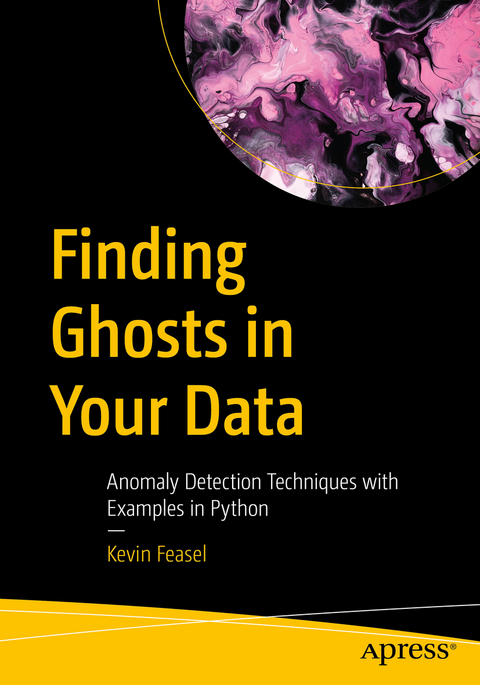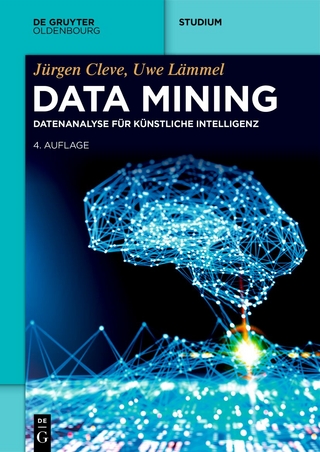
Finding Ghosts in Your Data
Apress (Verlag)
978-1-4842-8869-6 (ISBN)
The core of the book involves building a robust, deployable anomaly detection service in Python. You will start with a simple anomaly detection service, which will expand over the course of the book to include a variety of valuable anomaly detection techniques, covering descriptive statistics, clustering, and time series scenarios. Finally, you will compare your anomaly detectionservice head-to-head with a publicly available cloud offering and see how they perform.
The anomaly detection techniques and examples in this book combine psychology, statistics, mathematics, and Python programming in a way that is easily accessible to software developers. They give you an understanding of what anomalies are and why you are naturally a gifted anomaly detector. Then, they help you to translate your human techniques into algorithms that can be used to program computers to automate the process. You’ll develop your own anomaly detection service, extend it using a variety of techniques such as including clustering techniques for multivariate analysis and time series techniques for observing data over time, and compare your service head-on against a commercial service.
What You Will Learn
Understand the intuition behind anomalies
Convert your intuition into technical descriptions of anomalous data
Detect anomalies using statistical tools, such as distributions, variance and standard deviation, robust statistics, and interquartile range
Apply state-of-the-art anomaly detection techniques in the realms of clustering and time series analysis
Work with common Python packages for outlier detection and time series analysis, such as scikit-learn, PyOD, and tslearn
Develop a project from the ground up which finds anomalies in data, starting with simple arrays of numeric data and expanding to include multivariate inputs and even time series data
Who This Book Is For
For software developers with at least some familiarity with the Python programming language, and who would like to understand the science and some of the statistics behind anomaly detection techniques. Readers are not required to have any formal knowledge of statistics as the book introduces relevant concepts along the way.
Kevin Feasel is a Microsoft Data Platform MVP and CTO at Faregame Inc, where he specializes in data analytics with T-SQL and R, forcing Spark clusters to do his bidding, fighting with Kafka, and pulling rabbits out of hats on demand. He is the lead contributor to Curated SQL, president of the Triangle Area SQL Server Users Group, and author of PolyBase Revealed. A resident of Durham, North Carolina, he can be found cycling the trails along the triangle whenever the weather is nice enough.
Part I. What is an Anomaly?.- Chapter 1. The Importance of Anomalies and Anomaly Detection.- Chapter 2. Humans are Pattern Matchers.- Chapter 3. Formalizing Anomaly Detection.- Part II. Building an Anomaly Detector.- Chapter 4. Laying out the Framework.- Chapter 5. Building a Test Suite.- Chapter 6. Implementing the First Methods.- Chapter 7. Extending the Ensemble.- Chapter 8. Visualize the Results.- Part III. Multivariate Anomaly Detection.- Chapter 9. Clustering and Anomalies.- Chapter 10. Connectivity-Based Outlier Factor (COF).- Chapter 11. Local Correlation Integral (LOCI).- Chapter 12. Copula-Based Outlier Detection (COPOD).- Part IV. Time Series Anomaly Detection.- Chapter 13. Time and Anomalies.- Chapter 14. Change Point Detection.- Chapter 15. An Introduction to Multi-Series Anomaly Detection.- Chapter 16. Standard Deviation of Differences (DIFFSTD).- Chapter 17. Symbolic Aggregate Approximation (SAX).- Part V. Stacking Up to the Competition.- Chapter 18. Configuring Azure Cognitive Services Anomaly Detector.- Chapter 19. Performing a Bake-Off.- Appendix: Bibliography.
| Erscheinungsdatum | 12.11.2022 |
|---|---|
| Zusatzinfo | 106 Illustrations, black and white; XX, 353 p. 106 illus. |
| Verlagsort | Berkley |
| Sprache | englisch |
| Maße | 178 x 254 mm |
| Themenwelt | Informatik ► Datenbanken ► Data Warehouse / Data Mining |
| Mathematik / Informatik ► Informatik ► Programmiersprachen / -werkzeuge | |
| Informatik ► Theorie / Studium ► Algorithmen | |
| Informatik ► Theorie / Studium ► Künstliche Intelligenz / Robotik | |
| Schlagworte | Anomaly Detection • Anomaly Detection as a Service • Anomaly Detection Principles and Algorithms • Anomaly Detection: Techniques and Applications • ARIMA • ARMA • Azure Cognitive Services Anomaly Detector • Changepoint Detection • exponential smoothing • Gestalt • Interquartile range • Mahalanobis Distance • Multivariate Anomaly Detection • Outlier Analysis • Outlier and Anomaly Detection • Python • Robust Statistics • Time Series Anomaly Detection |
| ISBN-10 | 1-4842-8869-6 / 1484288696 |
| ISBN-13 | 978-1-4842-8869-6 / 9781484288696 |
| Zustand | Neuware |
| Informationen gemäß Produktsicherheitsverordnung (GPSR) | |
| Haben Sie eine Frage zum Produkt? |
aus dem Bereich


